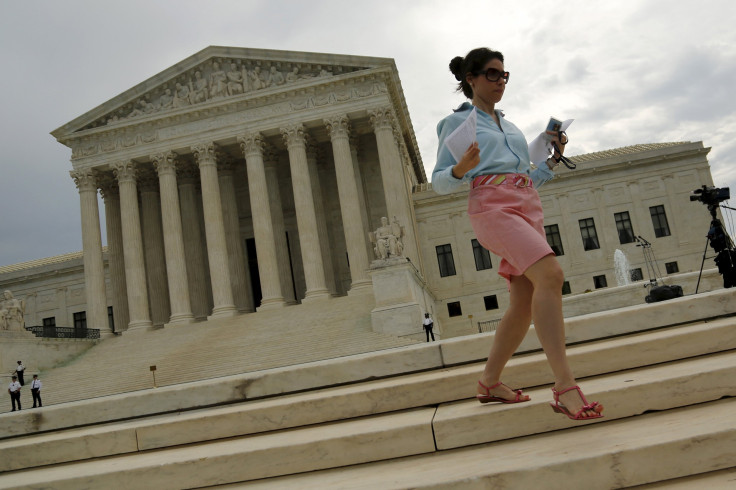
Around June of 2016, the U.S. Supreme Court will consider an abortion case with strong implications for access to abortion. Since 1972 the Supreme Court has rebuffed outright bans on abortion, yet the court has upheld partial restrictions, giving states the option to regulate women’s healthcare as long as the laws don’t present an " undue burden." In Texas, many abortion clinics shut down following a 2013 law that imposed stiff requirements on the facilities and the doctors that work in them. Supporters say that the laws are meant to protect women’s health. Opponents say that they rules place an undue burden, particularly on on rural and working women.
Here are 5 more things you need to know about the context of case.
1) What Roe v. Wade Really Meant
Row v. Wade ensured a women’s access to abortion through the notion of privacy. Abortions couldn’t be restricted, the court ruled, not because the had reproductive rights but because the had the right to privacy. Congress, it said, can’t interfere with the decisions of a doctor and their patient.
Since then, the Supreme Court has ruled on abortion twice. In 1992, it found that states could regulate abortion, setting the “undue burden” standard. That ruling opened the door for abortion opponents to curtail patients’ access, possibly a victory for those who want to reduce the number of abortion procedures performed.
2) Do Women Have Reproductive Rights In The U.S.?
Row v. Wade defined a woman’s right to privacy, but some Supreme Court Justices have argued that women also have a right to control their fertility.
“Women, it is now acknowledged, have the talent, capacity, and right ‘to participate equally in the economic and social life of the Nation,’” Justice Ginsburg wrote, citing the majority decision in the 1992 case, Planned Parenthood v. Casey.
“Thus, she continued, “legal challenges to undue restrictions on abortion procedures do not seek to vindicate some generalized notion of privacy; rather, they center on a woman's autonomy to determine her life's course, and thus to enjoy equal citizenship stature.’”
It is interesting that another country, China, just relaxed restrictions on women’s rights to have children. In the past, the state forced women to have abortions. In America, abortion restrictions rely on a state interest that allows the government to compel women to carry pregnancies to term.
“Where it has a rational basis to act, and it does not impose an undue burden, the State may use its regulatory power to bar certain procedures and substitute others, all in furtherance of its legitimate interests in regulating the medical profession in order to promote respect for life, including life of the unborn,” Justice Kennedy wrote in the majority opinion of the 1992 case.
3) Three Women On The Court
In 1992 Ginsberg was the only female justice on the court. Now there are two more: Sonia Sotomayor and Elena Kagan. Neither have clear stances on abortion and we can only guess which way that they will lean.
Kagan’s views on abortion are a bit of a mystery. She’s credited with drafting an anti-abortion memo to Bill Clinton in the 1990s. On lower courts, Sotomayor has in the past issued rulings that have both pleased and angered both sides of the debate.
However, having three women on the bench instead of one might make the discussion more personal and the arguments and questions more balanced and educated.
4) 2016 Election
The court is planning to take the case in the first part of 2016, right in the middle of the presidential election. On the Republican side, anti-abortion Texas Senator Ted Cruz has supported the 2013 law from day one.
On the Democrats side, all three candidates have pro-abortion rights records. But only Hillary Clinton has been has been at the center of headlines on the issue, taking heat from Republican opponents.
With political opinion on abortion sharply divided, expect abortion to be front-and-center on candidates’ platforms as they leverages the passions of supporters on this controversial issue to turn out and vote.
5) What Specifically Is At Stake?
The 2013 Texas abortion law creates major frictions for abortion providers, but don’t wade into the territory of privacy. So this decision really will come down to whether women have the right to have an abortion, regardless of the privacy standards.
One important part of the law requires doctors to have admitting privileges at a nearby full-fledge hospital. Large swaths of rural texas don’t have hospitals. If the provision is upheld, abortion access in rural states will be easier for states to restrict. Plaintiff and abortion clinic operator Amy Hagstrom Miller told CNN that the provision is unfair.
"There's an undue burden when women have to drive 250 miles one way, take off two days of work and get child care in order to have a procedure that is protected by the Constitution,"
Miller said.
Another restrictive measure requires clinics to be equipped like full-fledged hospitals. Texas Attorney General Ken Paxton says that medical standards prescribed under the 2013 law are fully under the purview of the states.
"The advancement of the abortion industry’s bottom line shouldn’t take precedent over women’s health, and we look forward to demonstrating the validity of these important health and safety requirements in Court," Paxton told Politico.
© 2025 Latin Times. All rights reserved. Do not reproduce without permission.



